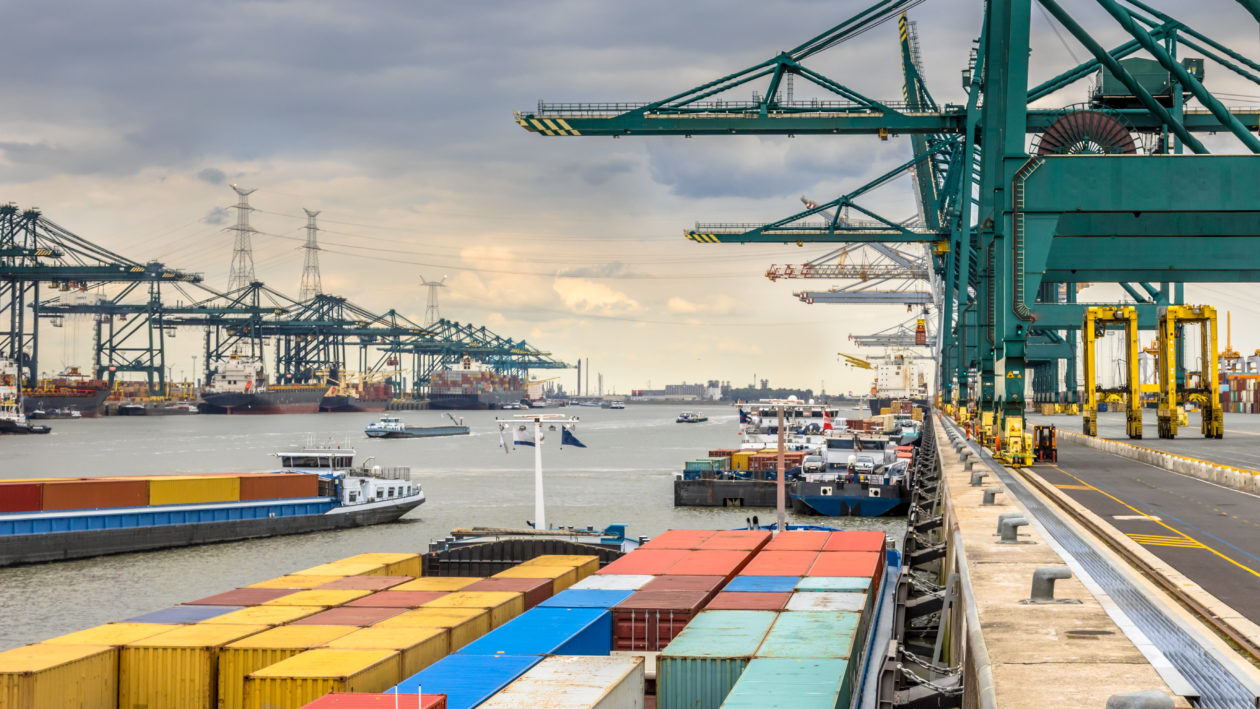Blockchain technology first emerged 30 years ago as a method of ensuring immutability of digital records, however it wouldn’t be popularized until 2009 when Bitcoin emerged as an alternative to fiat currencies. Beyond decentralized finance projects and specific industrial blockchain applications, what has been absent is an entire sector in which blockchain is the “killer driver” of its transformation. However, there is one sector that is facing a perfect storm for blockchain technology to transform it.
The crux of blockchain technology is creating trust between different entities where trust is non-existent. Nothing characterizes this more than the shipping sector. Today’s global supply chains are hugely complex with disparate and often competing market participants. Countries also have different regulations and standards, adding a further dimension of complexity. Moreover, the sector also remains heavily embedded in paper to the extent where there are still countries where there are fleets of dedicated motorbike couriers delivering paperwork between shippers and ports. Although this reliance on paper is costing the shipping sector alone $30 billion, its reluctance to reform has been driven by the unique legal, immutability and practical qualities only paper can offer over a PDF.

The Suez Canal was an early warning shot that the shipping sector is not only essential in global trade, but that it desperately needs to be transformed. The second warning shot is the supply chain issues brought on by Covid-19.
The need for a platform without falling into the traps
To transform a sector as expansive and as complex as the shipping sector, you need a platform. Platforms offer a protocol in which to facilitate data exchange, build applications and more. Some well-known examples from the internet era include Android, Azure and AWS, which underpin the creation of new value. In many ways this could be a powerful model for the shipping industry, providing it avoids the traps.
Antitrust and neutrality have been the theme of several tech policies in the last decade. Given the systemically important role a platform for the shipping sector would play, trust is essential. A platform where one party has access and control of data, for example, will not only raise concerns, but is also counterproductive since it will deter already competing market participants from adopting it.
Against this backdrop and in response, blockchain networks such as GSBN have emerged in recent years. However, given the complex nature of the global trade ecosystem, blockchain itself isn’t the panacea and networks require careful design considerations.
The importance of a consortium model
The primary objective of applying blockchain in shipping is to create the means for trusted data exchange between disparate and competing market participants. The intended outcome is digital transformation in an otherwise antiquated sector. Yet to achieve this does require a centralized organisation to shape the development of the network and make decisions to achieve this goal.
Naturally companies still want assurance that they have full control of their data, and the network provider won’t have access to this data, or indeed have an incentive to profit from it. This is where a not-for-profit consortium model makes sense. For companies involved, it provides them reassurance they have full control over their data, the development of the network is in the best interest of the industry as a whole and offers a more efficient way to transact.
Secure data exchange in a multi-regulatory environment
As one might imagine, supply chain regulation and shipping standards in one country will likely be different from the next. While there are several common standards being developed, the regulatory environment is disparate and complex. When developing a blockchain network, the objective here is not to reinvent the wheel.
Doing so is not only impractical, but it would be counterproductive. It theoretically makes sense for there to be homogenized standards, but in practice there are various historical, geopolitical and practical reasons behind the status quo. Waiting on new standards to emerge when the objective is to drive digital transformation would hinder progress.
This is where facilitating secure data sharing is beneficial. In other words, it allows market participants — such as banks, shippers and shipping lines — to share data with each other without inadvertently sharing sensitive information. Two parties can therefore share relevant data and verify information relevant to their own compliance jurisdictional requirements, allowing governance to be achieved.
Multi-vertical environment requires interoperability
Aside from building trust across different participants, blockchain networks must also build bridges. The shipping sector is amidst a digital leap in an effort not only to further lower cost and thus boost margins, but many players are doing so to shift towards a value driven business model. This is where shipping is interconnected with the global supply chain, from brands to customers, but most importantly, with financial institutions.
Trade finance is the lifeblood of global trade, but there is an all-time high of $1.7 trillion trade financing gap that is having a direct impact on small and medium enterprises. One of the major reasons for this is there is often a lack of complete information being made available throughout the global supply chain, in part driven by its obsession with paper.
Therefore, for a blockchain network in the shipping sector to succeed, it needs to have cross-chain and cross-network interoperability. Contour, for example, is a blockchain trade finance platform that uses R3’s Corda enterprise blockchain, whereas GSBN uses Hyperledger fabric. Breaking down the silos between the two can enable trusted, accurate and complete supply chain data to help SMEs and shippers.
Building trust amid technology bifurcation
The global bifurcation of technology also introduces a unique challenge. In theory, blockchain by design facilitates trust across disparate parties and geographies. However, in a world where trust and technology are increasingly bifurcated, it is not as simple, especially when networks must cover the U.S. and China, the largest exporting nations in the world. This was why when developing the GSBN network, a strategic decision was made to have fabric nodes in both international and Chinese territories, connected to form one enterprise blockchain network.
If successful, the impact of such a blockchain network in the shipping sector would be far-reaching. It could create new value for SMEs, support new business models and contribute to global economic growth. It is akin to how cloud supported the growth of today’s technology industry. To achieve this, networks need to establish trust and address the pain points the sector is facing.
The complex nature of global trade is a compelling case for the application of blockchain technology. However, compounded by an antiquated industry that is in its early days of going digital and an evolving geopolitical and regulatory environment, particularly careful consideration must be placed in the structure and technological features of the network.




